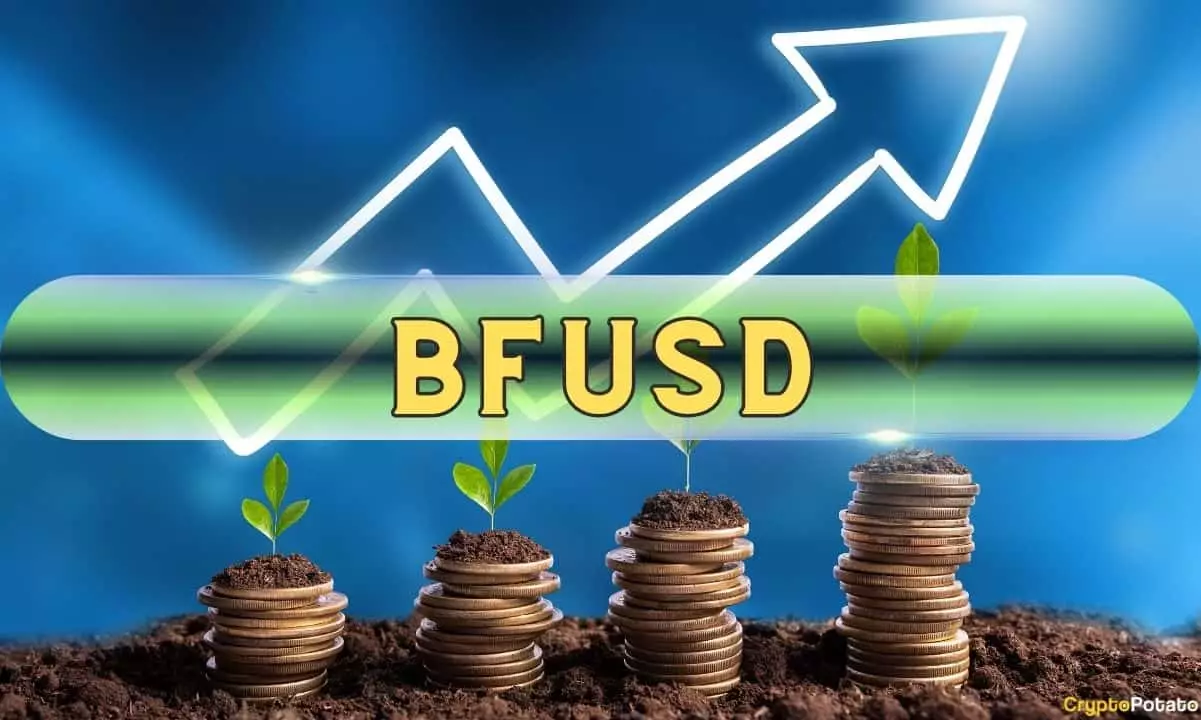The recent announcement surrounding Binance’s new token, BFUSD, has captivated the cryptocurrency community, igniting a flurry of speculation about its potential. Launched with a promising annual percentage yield (APY) of 19.55%, BFUSD aims to carve out its niche as a high-yield alternative to traditional stablecoins. By allowing users to earn daily rewards simply by holding BFUSD in their accounts without the need for staking or locking up their funds, Binance is positioning the token as an innovative tool for crypto enthusiasts looking for returns without sacrificing liquidity.
One notable feature of BFUSD is its impressive collateralization ratio of 105.54%. As of mid-November 2024, the associated reserve fund reportedly holds 1.1 million USDT, suggesting a robust backing for the token. However, comparisons to historic failures in the stablecoin market, such as the collapse of Terra’s UST, loom large. The similarities in the high yields of BFUSD and the ill-fated UST raise concerns about the underlying mechanisms that support BFUSD’s value. Binance has taken great care to clarify that BFUSD is not merely a stablecoin but rather a margin asset intended for futures trading. This distinction is critical since the term volatility often associated with stablecoins can raise red flags for investors who remember the debacle of earlier projects.
The Regulatory Landscape
The introduction of BFUSD occurs in the backdrop of increased regulatory oversight in the cryptocurrency marketplace. Regulatory pressures have shaped Binance’s decisions in the past, particularly following the New York Department of Financial Services’ (NYDFS) directive to Paxos in early 2023 to cease minting its popular stablecoin, BUSD. This regulatory scrutiny has forced Binance to reconsider its stablecoin offerings entirely, resulting in the eventual withdrawal of BUSD and a strategic pivot towards the FDUSD stablecoin. These shifts highlight how deeply interwoven regulatory developments are within the operational strategies of crypto exchanges.
The client response to BFUSD has been mixed. Crypto investors remember the speculative nature characteristic of yield-bearing products, leading to skepticism around BFUSD’s high yield. The launch of synthetic assets like Ethena Labs’ USDe, which boasted even higher yields previously, has only intensified scrutiny. Ethena’s dual-asset strategy for generating yield stands in stark contrast, leveraging Ethereum staking and perpetual swap funding rates. This innovative approach isolates its yield generation from the volatility of traditional stablecoin mechanics. Observers inside the crypto community are keen to see how BFUSD will navigate similar challenges, including establishing a loyal user base amid lingering concerns over its stability and operational model.
As Binance ventures forward with BFUSD, the broader implications for investors and the market at large are still unfolding. The promise of high returns aligns with the potential risks characteristic of the crypto sphere. While Binance promises more clarifications surrounding APY and the operational dynamics of BFUSD, it is essential for investors to tread carefully. Given the lessons learned from previous high-yield offerings in the crypto space, due diligence will be key for participants eager to explore this new frontier of digital assets.

